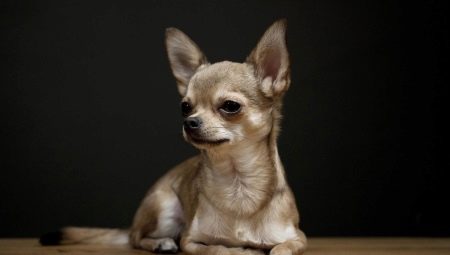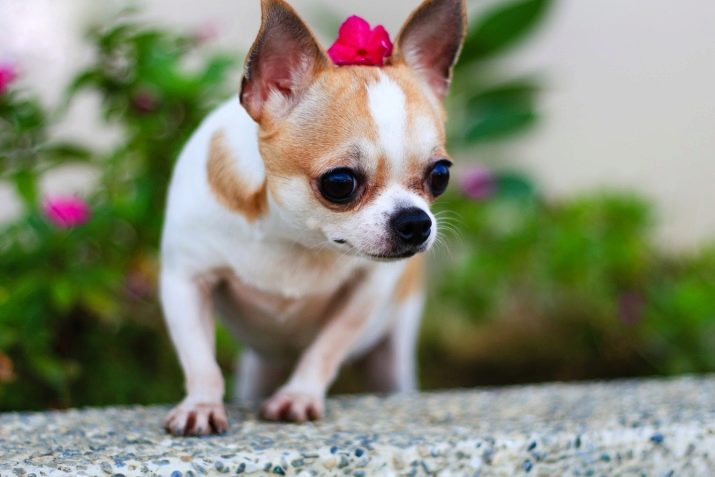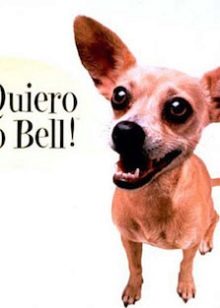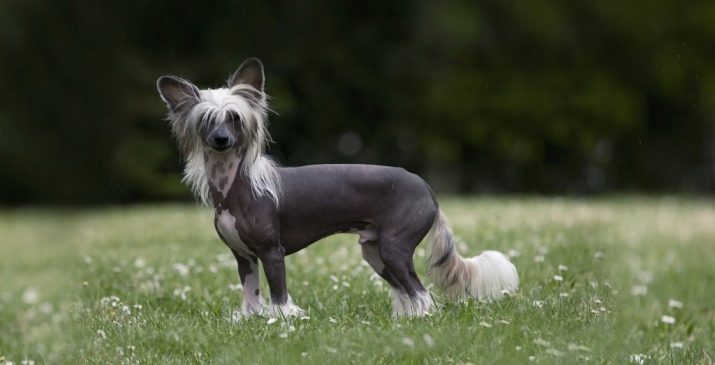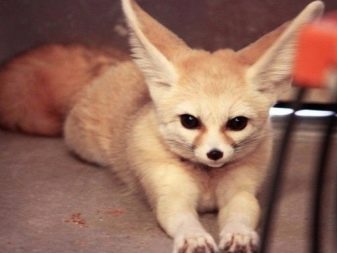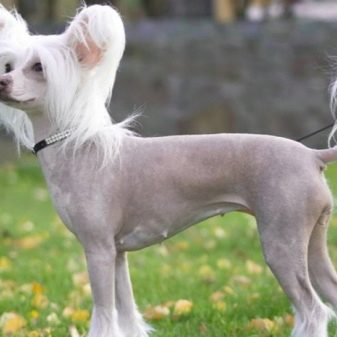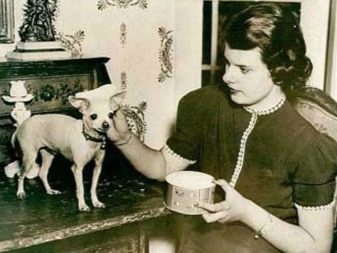Chihuahua breed dogs have long been known. Lovely doggies won the hearts of people with their playfulness and loyalty. Movies are shot about them, praising their bravery and ingenuity. Dogs of this breed can often be found in the hands of Bohemians. These lovely creatures with a long history will be discussed in our article.
Where did the dogs come from?
For the first time, Chihuahua dogs have received close attention in the largest state of Mexico, Chihuahua, bordering Texas and New Mexico. In the middle of the 18th century, Mexican merchants began selling to people visiting the sights of local small long-haired and short-haired dogs as souvenirs and pets. At that time there was no common name for the breed, therefore dogs were named after the state in which they were met: Arizona, Texas, Mexican, etc.
At the end of the 19th century, American dog specialist James Watson made an initial description of the breed by buying it in the Mexican borderland, where he specially came to check the veracity of rumors about pocket dogs, his first pet of the Chihuahua breed, Mazantina. After some time, the dog handler there also acquired several smooth-haired representatives of the breed, among whom was the future champion Juarez Bella.
Of great importance in the popularization of the friendly pocket-sized doggie singer Adeline Patti played. When the opera diva arrived on tour in Mexico, the president presented her with a bouquet of flowers, in which a small dog was hidden. Later, the singer often took a favorite on the performances, so that many were able to see the Chihuahua alive.
For the first time at the exhibition of the American Kennel Club representatives of the smooth-haired Chihuahua breed, everyone in the year 1904 could see. After 19 years, the first breed standard was compiled, which included descriptions of only short-haired dog species, and five years later, Chihuahua was recognized by the Canadian Kennel Club and included in the official list of breeds.
The first club Chihuahua was established in Britain in the middle of the XX century. He was part of the English Club and was engaged in the preparation of standards and the preservation of the purity of the breed. The second standard, which includes the description of long-haired Chihuahua species, was compiled in the early 60s of the last century by the combined efforts of British and American dog handlers. At the end of the 20th century, Taco Bell attracted to the creation of a commercial for a Chihuahua named Gidget, whose appearance on the screen again drew public attention to pocket dogs of an ancient breed.
From whom did they come?
The man tamed the ancestors of Chihuahua for a long time, and the history of miniature dogs rooted in the distant past. There are several versions of the origin of the smallest breed of dogs.
One of the versions says that the ancient Mesoamerica of the times of the Mayan civilization that existed since 2000 BC is the birthplace of Chihuahua. e. until 900 year n. e. The ancient Indians kept the ancestors of the Chihuahua (techichi) as companion dogs for help in the afterlife. The dogs were eaten, mummified and put into the grave during the burial, because the path of the soul of the deceased person to the realm of the dead lay through many dangerous places, and she needed a faithful helper to overcome the difficulties. The first images of these on the walls of the Mayan pyramids date back to the 18th century BC.
There is an assumption that the Chinese crested dog is one of the ancestors of the Chihuahua.The foreign dogs that arrived on the conquistador ships interbred with the local healers, laying the foundation of a new breed of dogs.
Another version brings the history of the origin of the breed to Malta, where another small dog was bred - Maltese or Maltese, whose ancestors are Melita. They are also recorded in the progenitors of Chihuahuas. Proponents of this version see confirmation of their theory in the fact that Chihuahua and Maltese have a similar shape of the skull, on which there is a soft spot, the so-called spring.
Also an additional fact in the piggy bank of confirmations is the fresco “The Calling and Testing of Moses” by the famous artist Sandro Botticelli. The painting depicts a boy holding a small dog in his hands, strongly resembling a Chihuahua. The fresco is located in the Sistine Chapel in the Vatican and was created several years before the discovery of America.
Some connoisseurs of the breed include the origin of dogs to ancient Egypt, on the territory of which statues and images of animals resembling chihuahuas were found. And because of the large ears and peculiar appearance, the Fennec chanterelles living in North Africa are recorded as related to the dog.
The main version, describing the origin of miniature dogs of the Chihuahua breed, is considered to be their occurrence among the Toltec, who came to the place of Maya in the IX century and inherited their customs. Silent healers were twice the size of modern chihuahuas and had a longer hair. As with the Maya, small dogs for the Toltecs were not only friendly and loyal companions in everyday life. They also accompanied their masters to the afterlife, rendering there full support to the soul of the departed.
Numerous images of lecchi on the walls of tombs, on pottery, figurines in the form of a small dog indicate that the domestic dog was of great importance to the indigenous people of Mexico. The Aztecs who came to the place of the Toltecs continued the traditions established by the Mayan empire. The Aztec country, which occupied the territory of modern Mexico, existed until the beginning of the 16th century, until it was conquered and the famous conquistador Hernan Cortes, who led the Spanish expedition to the New World, was ruined. The entire heritage of the Aztecs, including the ancestors of the Chihuahua, was destroyed. Part of the dogs hid in the woods, to subsequently be tamed by new residents who occupied the empty territories.
Modern scientific studies of the Chihuahua shed some light on the origin of the breed. Analyzes made on the basis of the DNA of dogs showed that no dogs like Chinese Crested can be the ancestors of Chihuahua. Scientists at the Stockholm Royal Technological Institute conducted a comparative characterization of the genes of American, European and Asian dogs, as a result of which there was a complete lack of coincidence in Chihuahua DNA with European and Asian breeds. But the selected unique genotype indicates a coincidence with dogs living in the territory of pre-Columbian Mexico.
DNA studies have also shown that chihuahuas possess the highest purity of the breed, leading its history since ancient times. Such cleanliness is ensured by the absence in the ancestors of dogs of different breeds and other canine species.
The shape of the head in the form of an apple, characteristic of a purebred dog, also refutes the relationship with the Chinese crested, since in those the shape of the skull is more angular. For the same reason, the relationship of a Chihuahua with a Mexican bare dog Xoloitzcuintle, which some people write to the ancestors of smooth-haired Chihuahua, is not recognized.
Appearance in Russia
The first chihuahuas appeared in the USSR at a time when Nikita Sergeevich Khrushchev was the First Secretary of the CPSU Central Committee. During one of his visits to Russia, Fidel Castro presented Khrushchev with a couple of long-haired pocket dogs as a sign of friendship between peoples.They were Kobelk Mishter (the official name is Spanky Bambi Herzog) and the little girl Musczyk or Don Tessa Duchess.
After some time, the dogs were handed over to Evgenia Fominichna Zharova, the creator of the Russian Toy Terrier. Obtained from the dog puppies became the founders of the Russian branch of Chihuahua, while Mushinka lived her life as a home favorite. Once she even starred in a movie. A little mouse can be seen in the movie “Elusive Avengers”, where Buba Kastorsky walks in the company of a spectacular black and white long-haired tiny dog.
Characteristics
Chihuahuas gained their popularity not only because of their size and appearance, but also because of their character. When breed standards were drawn up, special attention was paid to the behavior of purebred dogs. Chihuahuas are characterized by:
- speed of movement and speed of reaction;
- vivacity and curiosity;
- tirelessness and endurance;
- sheer friendliness and absolute fearlessness.
Cowardice and aggression are traits that disqualify the purity of the breed. Due to behavioral characteristics, both opposite-sex and same-sex individuals can perfectly live together.
Friendly and cheerful chihuahuas can accompany their hostesses, settling down in a woman's purse. Secular lionesses often use dogs as a stylish accessory, dressing them into suitable outfits, and the pet calmly maintains all the procedures and completely trusts the person.
Their curiosity and ability to take new makes miniature dogs faithful friends, suitable for families with small children. Despite their small stature, chihuahuas are fearless, bravely defending their masters. If an unfamiliar object does not show aggression, then after a while the dog accepts it and considers it its friend.
But despite all their friendliness, Chihuahuas are very touchy, especially if the punishment was unfair. Long-term negative feelings can lead to illness in dogs, as they are very emotional themselves and are sensitive to the fluctuation of emotions in the owner.
Therefore, if you want to have a faithful, fearless and healthy friend, then love, appreciate and never offend your pet, but his love is enough for everyone.
The history of the breed Chihuahua, see the following video.
